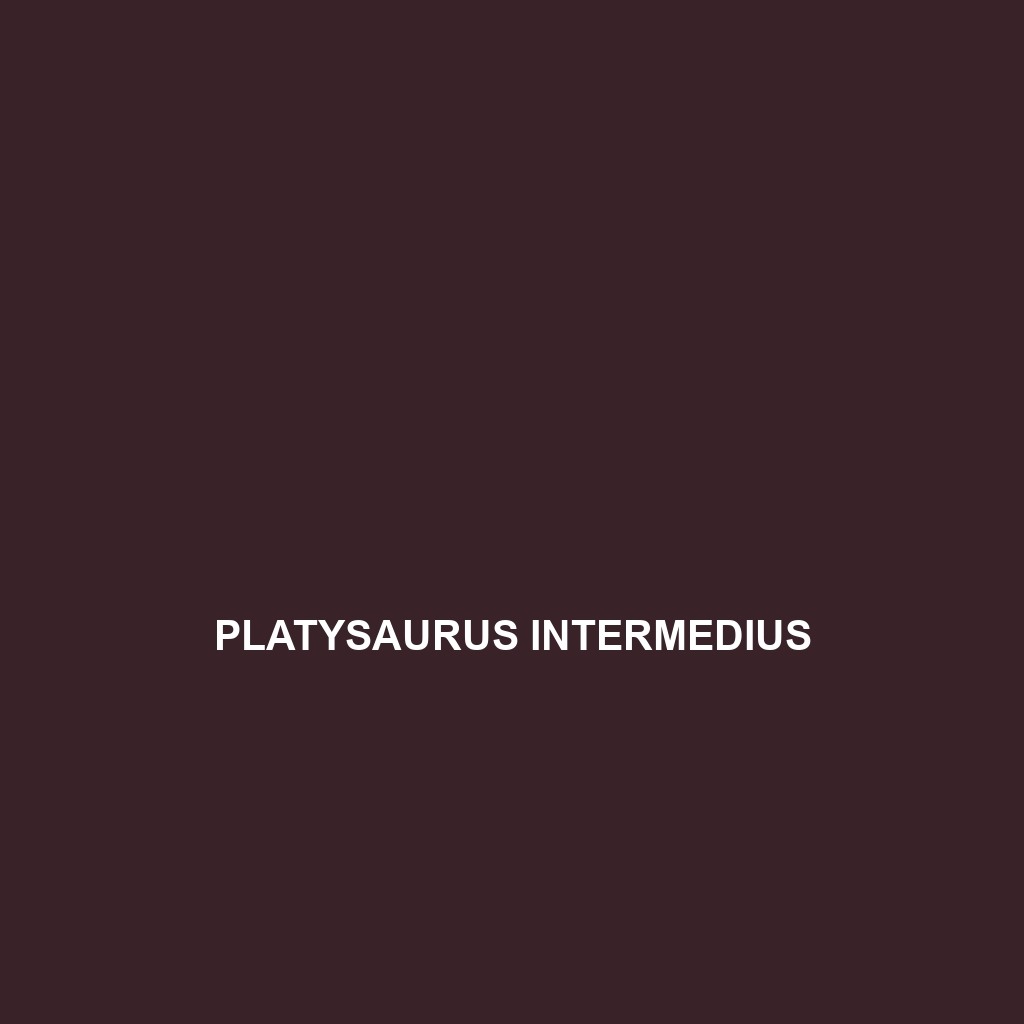Common Name
Platysaurus intermedius
Scientific Name
Platysaurus intermedius
Habitat
Platysaurus intermedius is primarily found in the arid and semi-arid regions of southern Africa, predominantly within the confines of rocky savannas and scrublands. This species thrives in climates characterized by warm temperatures and moderate rainfall, making it well-suited for a diverse range of habitats including temperate forests and open grasslands. They often inhabit rocky terrains that provide ample hiding spots and basking sites, which are crucial for their thermoregulation and protection from predators.
Physical Characteristics
One of the distinguishing features of Platysaurus intermedius is its elongated body shape, which can reach up to 12 inches (30 cm) in length. The species exhibits a unique coloration ranging from sandy browns to olive greens, allowing it to blend seamlessly into its natural environment. Its scales are smooth and glossy, enhancing its ability to retain moisture in arid regions. Additionally, the lizard showcases distinctive lateral stripes that can vary in color intensity, serving as a visual cue during mating rituals.
Behavior
In terms of behavior, Platysaurus intermedius is primarily diurnal, meaning it is most active during the day. These lizards display a fascinating array of social behaviors; they often engage in elaborate display rituals to establish dominance and attract mates. Mating rituals frequently involve visual displays such as push-ups and head bobbing, which can be mesmerizing to observe. Although they are primarily ground-dwellers, they are adept climbers and will often retreat to rocky outcrops to escape predators or regulate their body temperature. Their territorial nature is evidenced during breeding seasons when males assert dominance over their chosen territories.
Diet
Platysaurus intermedius is considered an insectivore, primarily feeding on a diet rich in various insects such as beetles, ants, and grasshoppers. Occasionally, they may consume plant material, making them opportunistic feeders. This diet is supplemented by occasional consumption of fruits and flowers, reflecting their adaptability in different environmental conditions. Their foraging behavior typically involves ambushing prey from hidden spots, showcasing their hunting skills in the wild.
Reproduction
The reproductive cycle of Platysaurus intermedius occurs primarily during the warmer months, with mating season typically happening in the spring. After a gestation period of about 6-8 weeks, females lay a clutch of 3-15 eggs in concealed nests within the sandy soil or among rocks. After hatching, the young lizards are independent and must navigate their surroundings immediately, showcasing their survival instincts. Parental care is minimal, as the species relies on their cryptic coloration to avoid detection by predators.
Conservation Status
Currently, Platysaurus intermedius is classified as being of Least Concern according to the IUCN Red List. However, habitat destruction due to agricultural expansion and urbanization poses significant threats to their population. Conservation efforts focus on habitat preservation and raising awareness about the importance of maintaining their natural ecosystems.
Interesting Facts
One of the most intriguing facts about Platysaurus intermedius is its remarkable ability to change color in response to environmental conditions, a phenomenon known as color polymorphism. This adaptation not only helps with camouflage but also plays a role in temperature regulation. Additionally, these lizards can exhibit unique social structures, with some populations displaying complex hierarchies that influence reproductive success.
Role in Ecosystem
Platysaurus intermedius plays a critical role in its ecosystem as both a predator and prey species. By feeding on a variety of insects, it helps regulate insect populations, which maintains the balance within its habitat. Conversely, as a food source for larger predators like birds of prey and snakes, they contribute to the food web, showcasing their importance in maintaining ecosystem health. Furthermore, their activities as foragers can aid in soil aeration and seed dispersal, enriching the local biodiversity.
